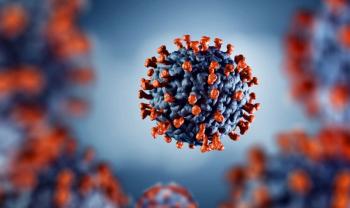
What's Coming for Pediatric Atopic Dermatitis
Children with atopic dermatitis will soon have more options for treatment, as clinical trials show promising results.
With the development of new therapies, patients with atopic dermatitis (AD) will receive more effective treatment in the future, according to a recent study.
AD is most often seen in children, leading to itchy, inflammatory skin. In many cases, childhood AD is linked with parental eczema, and is also the most common skin disease, with 10% to 20% of children in developed countries afflicted.
About half of children with AD experience negative impacts on their quality of life. It often leads to sleep deprivation and weakening of physical and mental functions. Relationships with family members are also affected from the physical and mental effects of AD and the time that treatment consumes.
Currently, AD is treated through proper skincare, the use of topical medicines, and the elimination of aggravating factors. Treatment must be constant in order to avoid regressive symptoms, as AD is a recurring condition. In moderate-to-severe cases of AD, patients can develop asthma or hay fever. These severe cases will cause large areas to itch and even develop a rash. Because of this, severe cases of AD require constant monitoring.
Phototherapy is effective in treating AD but is barricaded to many due to cost and accessibility. Newer treatments have been developed to target specific pathways, such as dupilumab (Dupixent; Sanofi and Regeneron), the first biological medicine developed for moderate-to-severe AD. While dupilumab is effective in many cases, some children will respond negatively to the treatment. Other factors such as skin infections and hypersensitive reactions can cause symptoms to persist in some patients.
Recent advances have been made in treatment for pediatric AD. Ruxolitinib has been FDA approved for patients aged 12 years and above, making it the first medicine tested in adolescents aged 12 to 17 years. It can be used for AD patients with mild-to-moderate cases who are not using other medications.
For moderate-to-severe cases of AD, adults or children aged 12 years and above can take abrocitinib (Cibinqo; Pfizer), an oral inhibitor which has passed multiple phase 3 studies in children aged 12 years and above. Another inhibitor, delgocitinib (Leo Pharma), is currently being studied in pediatric patients aged 12 to 17 years and in adults. A phase 2 study on the usedelgocitinib in children aged 2 to 17 years has been completed, but the results have not yet been published.
Further medications are being developed for pediatric patients aged under 12 years. Upadacitinib (Rinvoq; AbbVie) is currently approved for moderate-to-severe cases of AD and adults and is now being considered for children aged 2 to 17 years. The antibody omalizumab (Xolair; Novartis) was also tested for pediatric use in a trial for children aged 4 to 18 years.
Phase 3 trials for treatments of AD have been progressing, with many showing significant results. This should lead to more options and a greater efficacy in treating AD.
This article originally appeared on Contemporary Pediatrics.
Reference
PiyuParth, N. Recent insights into the management of treatment-resistant pediatric atopic dermatitis. International Journal of Women’s Dermatology. 2022;8(2). doi:10.1097/JW9.0000000000000023
Newsletter
Pharmacy practice is always changing. Stay ahead of the curve with the Drug Topics newsletter and get the latest drug information, industry trends, and patient care tips.






































































































































